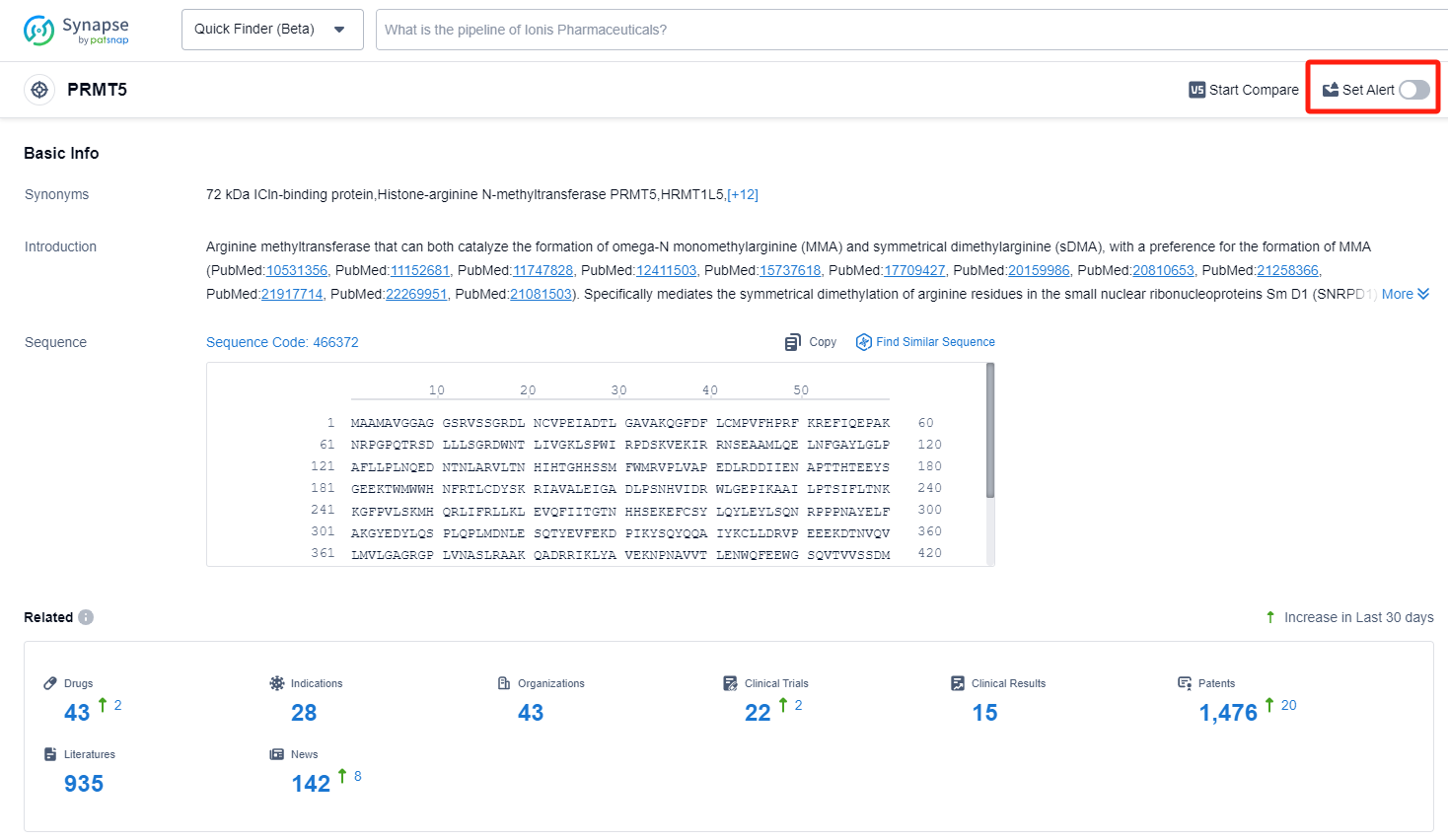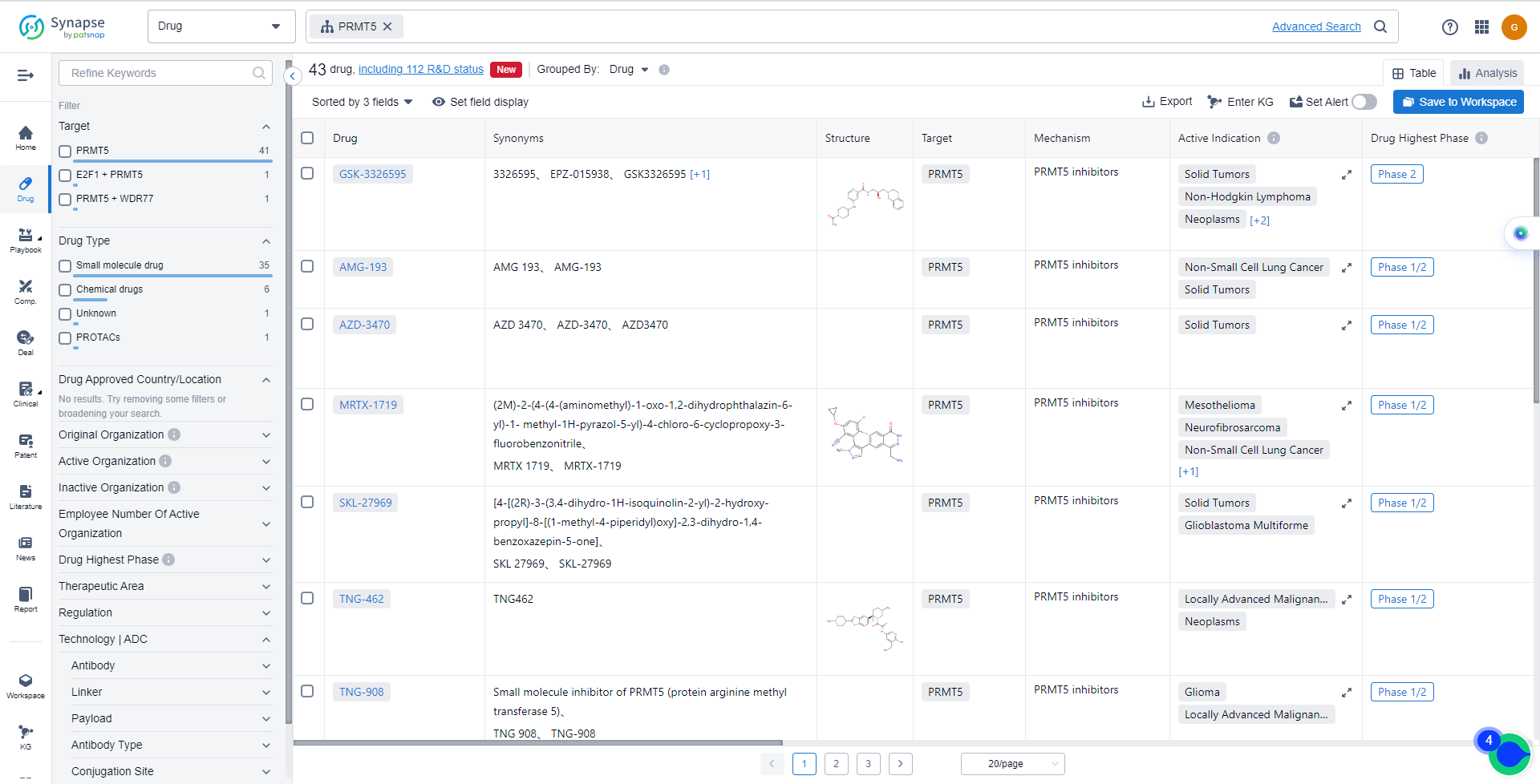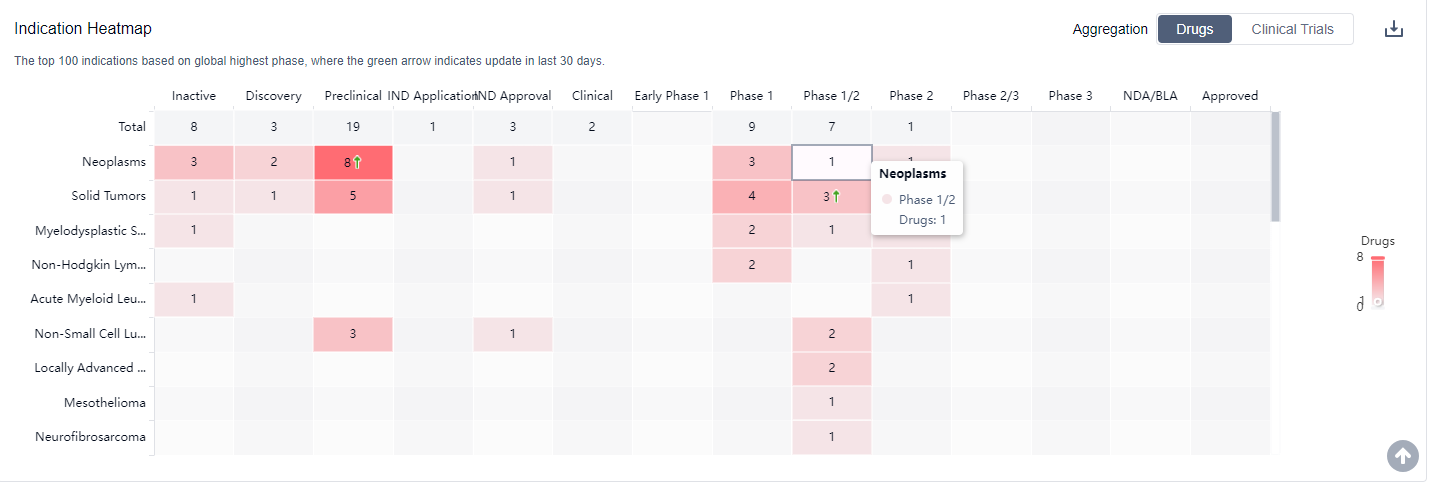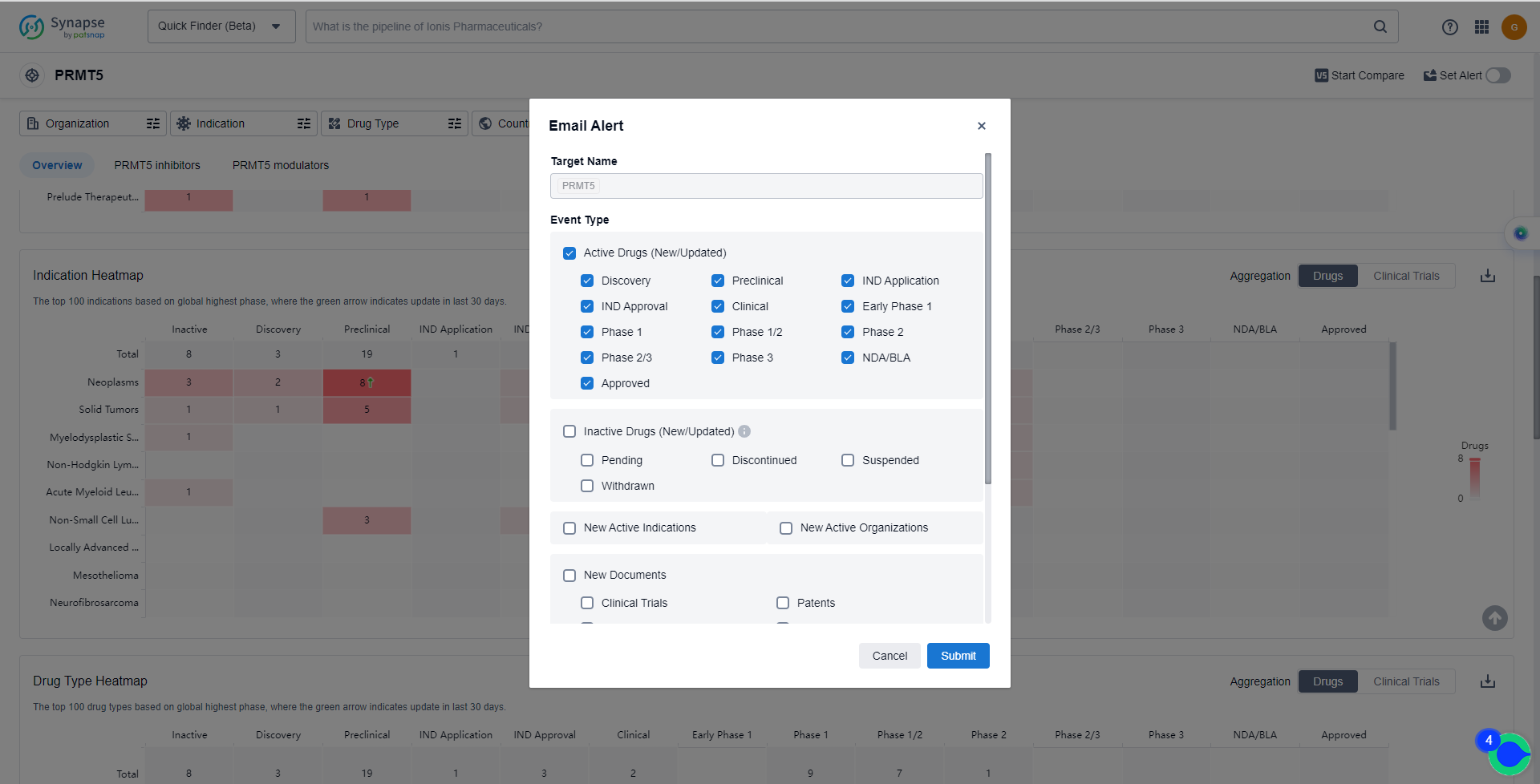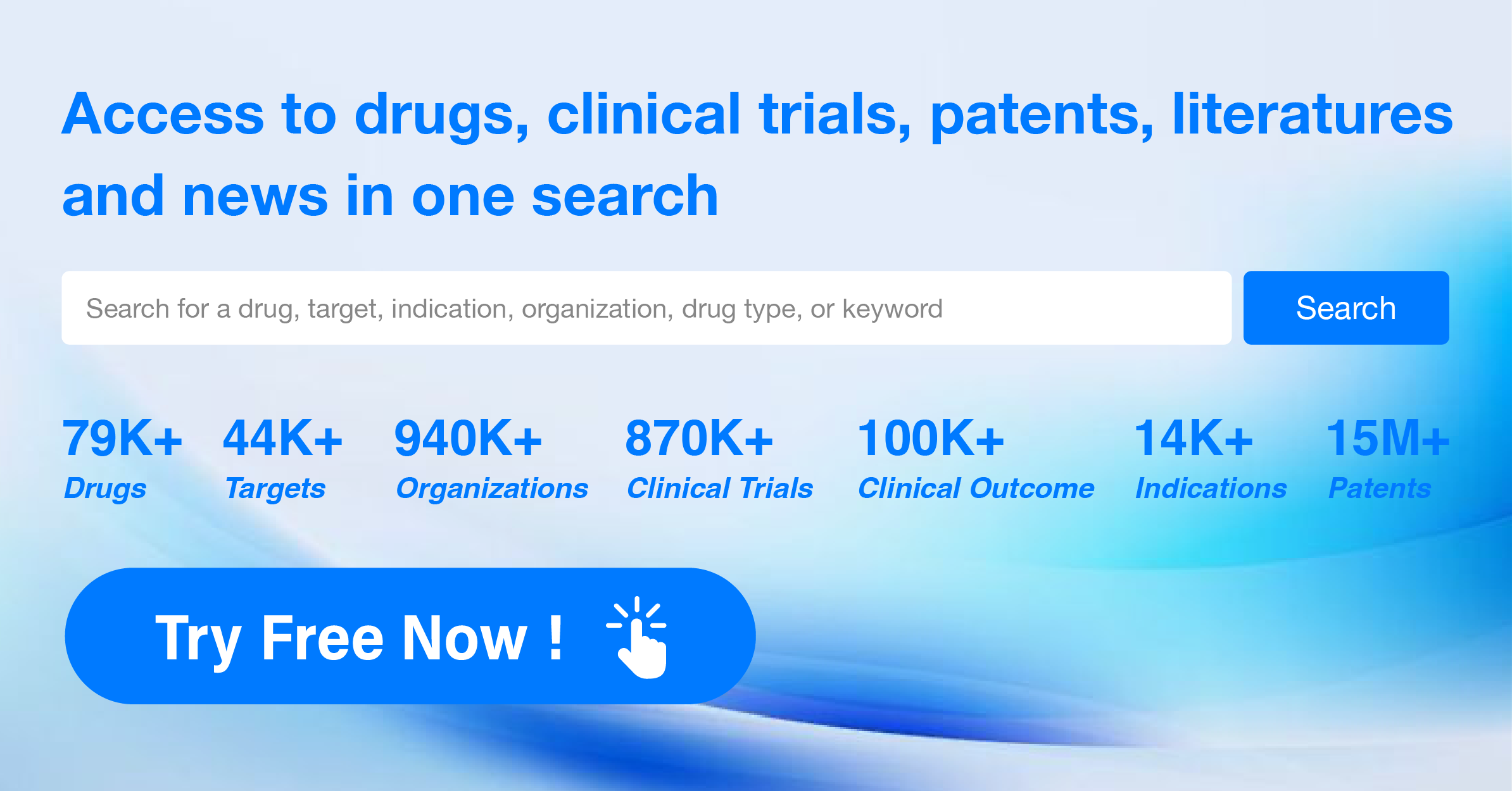Deciphering PRMT5 Inhibitors and Keeping Up with Their Recent Developments
PRMT5 (Protein Arginine Methyltransferase 5) is an enzyme that plays a crucial role in the human body. It is responsible for the methylation of arginine residues in proteins, which regulates various cellular processes. PRMT5 is involved in gene expression, RNA processing, and protein translation, impacting cell growth, differentiation, and development. Additionally, it has been linked to cancer progression, as aberrant PRMT5 activity can lead to uncontrolled cell proliferation and tumor formation. Understanding the role of PRMT5 in the human body is essential for developing targeted therapies and interventions to modulate its activity and potentially treat diseases associated with its dysregulation.
Currently, several PRMT5 inhibitors have entered clinical trials for the treatment of various cancers, such as late-stage or recurrent solid tumors with MTAP deficiency. As an emerging class of anti-cancer drugs, PRMT5 inhibitors are still in the early stages of clinical development. Meanwhile, following PARP inhibitors, PRMT5 inhibitors are the most promising anti-cancer drugs based on the “synthetic lethality” mechanism. Currently, no drugs targeting PRMT5 have been approved for marketing. According to the types of inhibitors, they can be divided into: substrate-competitive PRMT5 inhibitors, SAM-competitive PRMT5 inhibitors, covalent SAM-competitive PRMT5 inhibitors, SAM/substrate dual-site PRMT5 inhibitors, PRMT5-MTA complex inhibitors (MRTX1719), PRMT5-peptide complex inhibitors, allosteric PRMT5 inhibitors, PROTAC-mediated PRMT5 inhibitors, and dual-target PRMT5 inhibitors.
The analysis of target PRMT5 reveals a competitive landscape with multiple companies actively involved in the research and development of PRMT5 inhibitors. GSK Plc, Ipsen SA, Tango Therapeutics, Inc., Amgen, Inc., and Mirati Therapeutics, Inc. are among the companies leading the development. The indications for PRMT5 inhibitors cover a wide range of cancers and hematologic disorders, indicating their potential in treating various malignancies. Small molecule drugs and chemical drugs are progressing rapidly, suggesting intense competition in the development of innovative drugs. The United States, China, and other countries are actively contributing to the development of PRMT5 inhibitors. Overall, the target PRMT5 shows promising prospects in the pharmaceutical industry, with potential for significant advancements in the future.
How do they work?
PRMT5 inhibitors are a type of drugs that target and inhibit the activity of PRMT5 enzymes. PRMT5, or protein arginine methyltransferase 5, is an enzyme involved in the process of protein methylation, specifically the methylation of arginine residues. Methylation is a post-translational modification that plays a crucial role in regulating protein function and cellular processes.
From a biomedical perspective, PRMT5 inhibitors are being investigated for their potential therapeutic applications in various diseases, including cancer. PRMT5 has been found to be overexpressed in certain types of cancer, and its dysregulation has been associated with tumor growth and progression. By inhibiting PRMT5 activity, these inhibitors aim to disrupt the abnormal methylation patterns in cancer cells, leading to the inhibition of tumor growth and potentially enhancing the effectiveness of other anticancer treatments.
Research on PRMT5 inhibitors is still ongoing, and their precise mechanisms of action and therapeutic potential are being explored. These inhibitors hold promise as a targeted therapy for cancer and may have broader implications in other diseases where PRMT5 dysregulation is implicated.
List of PRMT5 Inhibitors
The currently marketed PRMT5 inhibitors include:
For more information, please click on the image below.
What are PRMT5 inhibitors used for?
PRMT5 inhibitors show broad therapeutic prospects in solid tumors and malignant tumors of the hematopoietic system. For more information, please click on the image below to log in and search.
How to obtain the latest development progress of PRMT5 inhibitors?
In the Synapse database, you can keep abreast of the latest research and development advances of PRMT5 inhibitors anywhere and anytime, daily or weekly, through the "Set Alert" function. Click on the image below to embark on a brand new journey of drug discovery!
